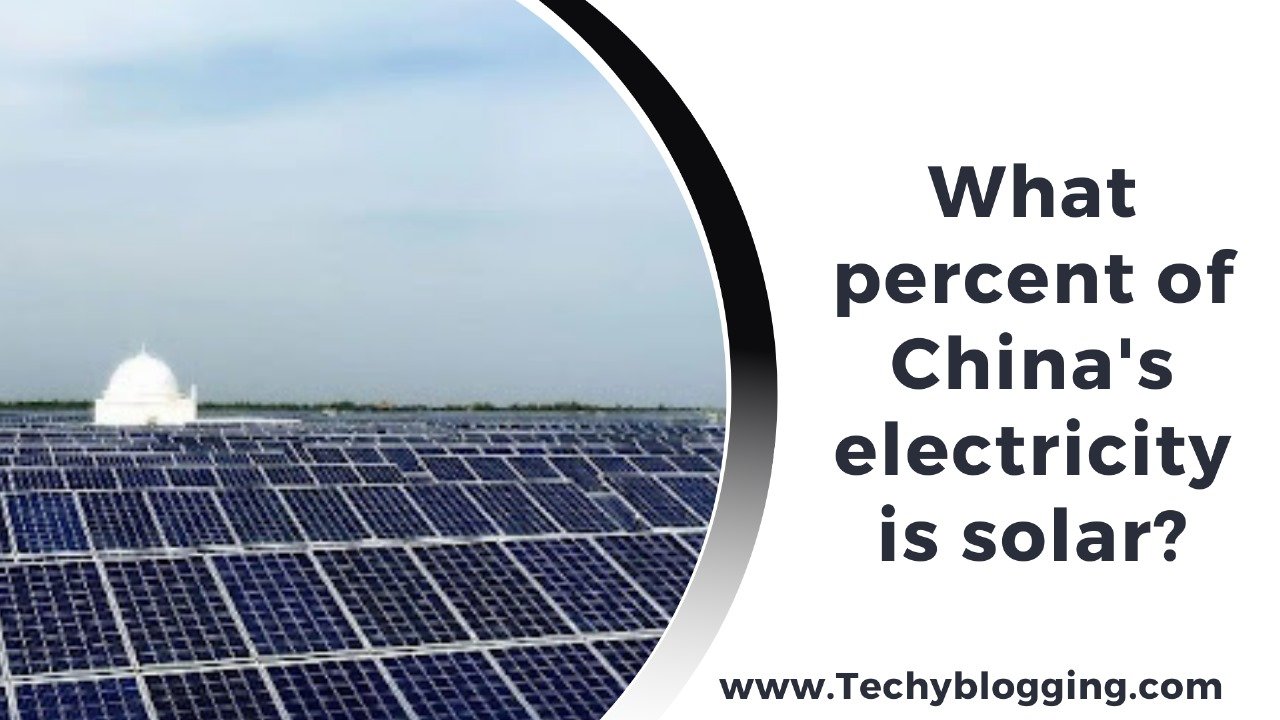The world’s biggest source and largest consumer of energy, China is at the leading the transition to alternative energy sources. Recently solar power has become an important factor in the energy industry of China. This article focuses on the amount of electricity that is generated through solar energy in China as well as the development of the solar power industry and analyzes the implications this change for China and around the globe.
The Rise of Solar Power in China
Historical Context
The Chinese journey to solar energy began towards solar energy in the last 20th century. It increased in importance during the decade 2000. The emphasis on renewable energy was a part of a wider strategy that aimed to lessen dependency on fossil fuels and tackle environmental issues, as well as boost the security of energy. Policy initiatives like that of the Renewable Energy Law, enacted in 2006, offered the financial incentive and support for regulatory agencies which accelerated the development of the solar sector.
Recent Developments
In 2023 solar power is responsible around 15% of China’s overall power production. This number reflects the rapid increase in solar capacity over the past few years due to technological advancements and economies of scale and a favorable government policy. China is currently home to the world’s largest solar market the world with an capacities that exceed 300 gigawatts (GW).
The Current State of Solar Energy in China

Installed Capacity
The solar power output of China has risen exponentially, rising growing from 1.5 Gw in the year 2010 and more than 300 GW by year 2022’s end. This rise has been driven through both solar farms for utility use as well as rooftop solar installations that are becoming increasingly common in cities. In the early 2023 years, China had more than 3 million solar panels, which ranged from massive solar parks, to smaller rooftop solar systems.
Contribution to the Energy Mix
The contribution of solar energy to China’s electricity production has been steadily increasing, from just 1% decade ago, and now about 13% now. This is an indication of China’s determination to reduce carbon emissions as well as moving to more sustainable energy sources. The year 2022 was the only one where solar power generation increased by more than 25% which makes it one of the most rapidly growing energy industries within the country.
Factors Driving Solar Energy Growth
Government Policies
The Chinese government has enacted a number of incentives and policies in order to boost solar power. Tax incentives, subsidy programs along with tax breaks encourage both enterprises and individuals to put money into solar technologies. In addition it is important to note that there is the “14th Five-Year Strategy,” that outlines the country’s economic and environmental goals from 2021 until 2025, stresses the significance of promoting the use of renewable energy sources, such as solar.
Technological Advancements
Technology innovation has played an vital contribution to making solar energy affordable and more cost-effective. Innovations of the field of photovoltaic (PV) techniques have enhanced efficiency as well as reduced the cost and have allowed for a wider adoption. China has a number of prominent solar companies, which has helped lower costs across the world. This has helped make solar energy increasingly competitive with traditional fossil fuels.
Economic Factors
In the midst of the fluctuation of fossil fuel prices the argument for solar power becomes more compelling. The lower cost of solar panels, and the their associated technology has created a compelling choice for residential as well as commercial energy consumers. In addition energy independence is an important problem for China as solar power can loated tea recipe reduce the risks of the dependence on imported energy sources.
Challenges Facing Solar Energy in China
Grid Integration
Despite the rapid growth of solar power production, integrating this source of renewable energy in China’s grid is a major challenge. China’s grid was originally designed to support central energy generation. This makes it challenging to adapt to the distributed nature of solar energy. The investment in smart grid technology and solutions for energy storage are crucial to solve the integration challenges.
Environmental Concerns
Although solar energy is more sustainable than fossil fuels however the manufacturing of solar panels can have negative environmental impacts. The extraction of essential materials like silicon, and manufacturing procedures can cause substantial polluting. China has taken steps to address this issue through promoting environmentally sustainable practices in production as well as regulations that aim to reduce carbon emissions from solar power.
Regional Disparities
China’s solar energy capacity is not equally distributed throughout the country. In contrast to provinces like Xinjiang and Qinghai have huge solar farms thanks to their abundance of sunshine and access to land, other regions are struggling to utilize the power of solar efficaciously. These regional differences pose issues in the area of fair access to energy and the development of infrastructure.
Future Prospects for Solar Energy in China
Continued Growth
professionals believe that solar power will contribute significantly to the energy mix of China. The Chinese government is aiming to improve the percentage of non-fossil sources of energy for its energy usage by 25 percent. This goal will likely to boost investment into solar energy and similar technology.
Innovations in Storage and Technology
Since solar energy is becoming increasingly integral to China’s energy policy the advancements in the field of energy storage are vital. Storage solutions for batteries are likely to loated tea recipe reduce the fluctuating power generated by solar providing a steady and reliable supply of power. In addition, research and development of solar-related technologies, including bifacial solar panels as well as floating solar farms will likely improve the efficiency of land and increase its usage.
Global Leadership in Renewable Energy
The Chinese commitment to solar energy has the country as an international pioneer in the area of renewable energy. It isn’t just the biggest producer of solar panels, but it is in addition, it’s a major exporter of solar technologies. In the same way, other countries seek to shift to renewable energy the Chinese expertise and manufacturing capabilities could play an important part in shaping the international solar market.
Conclusion
The solar energy sector has grown to become a vital part of China’s electricity production which will account for about 13% to the electricity mix total in 2023. China’s explosive growth in solar energy capacity shows its commitment to renewable energy as well as its efforts at tackling the issue of climate change. Even though there is still a lot to be done like grid integration, as well as environmental concerns but solar power’s future in China is looking promising. In a world that is increasingly shifting towards renewable energy sources the Chinese advances in solar technologies and policies frameworks will surely impact global energy trends for future years.




